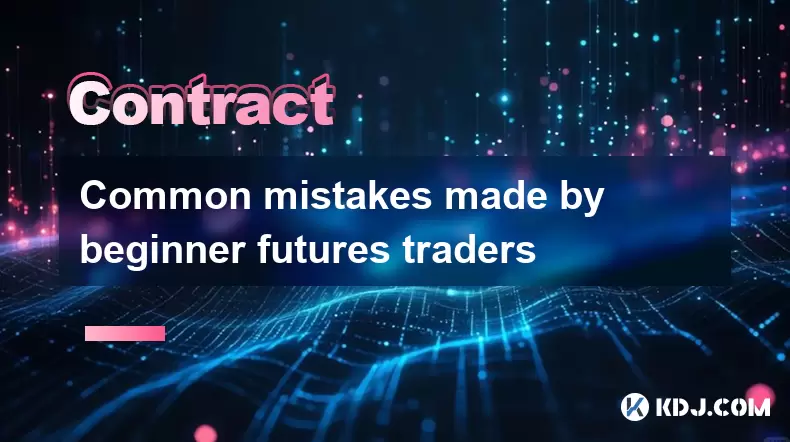-
 Bitcoin
Bitcoin $118,698.3676
0.16% -
 Ethereum
Ethereum $3,428.4877
5.97% -
 XRP
XRP $3.2496
9.52% -
 Tether USDt
Tether USDt $1.0002
0.00% -
 BNB
BNB $725.6930
4.36% -
 Solana
Solana $174.8923
4.52% -
 USDC
USDC $0.9997
-0.02% -
 Dogecoin
Dogecoin $0.2139
6.02% -
 TRON
TRON $0.3155
4.62% -
 Cardano
Cardano $0.8045
7.12% -
 Hyperliquid
Hyperliquid $46.6582
-1.72% -
 Stellar
Stellar $0.4676
0.80% -
 Sui
Sui $4.0143
0.38% -
 Chainlink
Chainlink $17.1546
2.97% -
 Hedera
Hedera $0.2458
3.27% -
 Bitcoin Cash
Bitcoin Cash $496.5967
-0.06% -
 Avalanche
Avalanche $22.8813
3.13% -
 Shiba Inu
Shiba Inu $0.0...01439
3.42% -
 UNUS SED LEO
UNUS SED LEO $8.8389
0.42% -
 Toncoin
Toncoin $3.2113
2.82% -
 Litecoin
Litecoin $101.2646
4.24% -
 Polkadot
Polkadot $4.2262
2.32% -
 Monero
Monero $340.4295
2.92% -
 Pepe
Pepe $0.0...01365
2.92% -
 Uniswap
Uniswap $8.9702
-2.78% -
 Bitget Token
Bitget Token $4.7675
2.00% -
 Dai
Dai $0.9998
-0.02% -
 Ethena USDe
Ethena USDe $1.0003
-0.04% -
 Aave
Aave $324.6394
-2.11% -
 Bittensor
Bittensor $433.6051
-0.88%
How to backtest a Bitcoin futures trading strategy?
Backtesting Bitcoin futures strategies using historical data helps traders evaluate performance, optimize parameters, and account for slippage and funding rates before live trading.
Jul 15, 2025 at 11:35 am

Understanding Bitcoin Futures Trading
Bitcoin futures trading involves contracts to buy or sell Bitcoin at a predetermined price and date in the future. Traders use these instruments to speculate on price movements or hedge existing positions. Backtesting a strategy in this context means applying a trading plan to historical data to evaluate its performance before risking real capital. This process helps identify strengths and weaknesses in a strategy without actual financial exposure.
Importance of Historical Data in Backtesting
Accurate historical data is crucial for effective backtesting of a Bitcoin futures trading strategy. The quality and granularity of the data directly impact the reliability of the results. Traders should seek high-quality datasets that include open, high, low, and close (OHLC) prices, volume, and funding rates for perpetual futures contracts. Data sources like Bybit, Binance, or Kraken offer downloadable historical data for Bitcoin futures, which can be used in conjunction with backtesting software or custom scripts.
Selecting the Right Backtesting Tools
Several platforms and programming languages support backtesting of cryptocurrency trading strategies. Python, with libraries such as Pandas, NumPy, and Backtrader, is widely used due to its flexibility and extensive community support. Alternatively, platforms like TradingView and MetaTrader allow users to create and test strategies using built-in scripting languages. Backtrader is particularly popular among Bitcoin traders because it supports tick-level and minute-level data analysis, which is essential for high-frequency strategies.
Steps to Backtest a Bitcoin Futures Strategy
- Define the trading strategy clearly, including entry and exit conditions, stop-loss, and take-profit levels.
- Acquire historical data for the specific Bitcoin futures contract being traded, ensuring it includes timeframes relevant to the strategy.
- Import the data into a backtesting environment, ensuring timestamps are correctly aligned and adjusted for time zones.
- Implement the strategy logic using code or visual strategy builders, ensuring that slippage and transaction fees are included in the model.
- Run the backtest and record key performance metrics such as win rate, profit factor, and maximum drawdown.
- Analyze the results to determine whether the strategy is profitable and robust across different market conditions.
Accounting for Market Conditions and Slippage
Bitcoin futures markets can be highly volatile, with rapid price movements and liquidity fluctuations. Slippage must be factored into any backtest, as actual execution prices may differ from expected prices during live trading. Traders can simulate slippage by applying a percentage offset to entry and exit prices. Additionally, funding rates for perpetual contracts should be considered, as they can significantly impact long-term holding costs. Historical funding rate data is available from exchanges like BitMEX and Bybit and should be incorporated into the backtesting model for accuracy.
Optimizing and Validating the Strategy
After the initial backtest, traders often attempt to optimize parameters such as moving average lengths or RSI thresholds. Overfitting is a common pitfall, where a strategy performs well on historical data but fails in live markets. To avoid this, traders should use walk-forward optimization and out-of-sample testing. Walk-forward analysis involves periodically re-optimizing the strategy on new data segments to ensure robustness. Out-of-sample testing involves holding back a portion of historical data and testing the strategy on it after optimization to verify consistency.
Frequently Asked Questions
Q: Can I backtest a Bitcoin futures strategy without coding knowledge?
Yes, platforms like TradingView and some exchange-native tools allow users to create and test strategies using visual scripting or pre-built templates without needing to write code.
Q: How do I handle funding rates in a Bitcoin perpetual futures backtest?
Funding rates are periodic payments made to long or short traders depending on the price difference between the futures contract and the spot price. You can download historical funding rate data from exchanges and include it in your profit and loss calculations during backtesting.
Q: What timeframes are best for backtesting Bitcoin futures strategies?
The choice of timeframe depends on the strategy. Intraday strategies may use 1-minute or 5-minute data, while swing strategies might use daily or weekly data. Ensure the data aligns with your intended holding period and market exposure.
Q: Is backtesting sufficient before live trading Bitcoin futures?
While backtesting provides valuable insights, it should be followed by paper trading (simulated trading) to test the strategy in real-time market conditions before deploying real capital.
Disclaimer:info@kdj.com
The information provided is not trading advice. kdj.com does not assume any responsibility for any investments made based on the information provided in this article. Cryptocurrencies are highly volatile and it is highly recommended that you invest with caution after thorough research!
If you believe that the content used on this website infringes your copyright, please contact us immediately (info@kdj.com) and we will delete it promptly.
- Maharashtra Government Nurses Launch Indefinite Strike: A Healthcare Crisis?
- 2025-07-18 04:30:13
- Hilbert Group, Syntetika, and Tokenization: Bridging DeFi and Institutional Finance
- 2025-07-18 05:30:12
- Crypto Regulation in the US House: Decoding the CLARITY Act and What It Means for You
- 2025-07-18 04:30:13
- Superman Soars on Coins and Medals: A Collector's Guide to Comic Art Treasures
- 2025-07-18 05:30:12
- Bitcoin Whale Wallets in Motion: What's the Buzz?
- 2025-07-18 05:35:13
- Pepeto, Dogecoin, Popcat: Meme Coin Mania in 2025!
- 2025-07-18 05:50:12
Related knowledge

What is a stablecoin-margined contract vs a coin-margined contract?
Jul 15,2025 at 06:36pm
Understanding the Difference Between Stablecoin-Margined Contracts and Coin-Margined ContractsIn the world of cryptocurrency derivatives, margin plays...

How to analyze volume profile for Bitcoin futures?
Jul 17,2025 at 01:21am
Understanding Volume Profile in Bitcoin Futures TradingVolume profile is a crucial analytical tool used by traders to assess the distribution of tradi...

How to backtest a Bitcoin futures trading strategy?
Jul 15,2025 at 11:35am
Understanding Bitcoin Futures TradingBitcoin futures trading involves contracts to buy or sell Bitcoin at a predetermined price and date in the future...

Common mistakes made by beginner futures traders
Jul 17,2025 at 07:49am
Overleveraging Without Understanding the RisksOne of the most frequent mistakes made by beginner futures traders is overleveraging their positions. Fu...

Psychology of trading Bitcoin contracts
Jul 13,2025 at 02:50am
Understanding the Emotional Rollercoaster of Bitcoin Futures TradingBitcoin contract trading, especially in the form of futures, introduces a high lev...

How to build a trading plan for Bitcoin futures?
Jul 17,2025 at 08:42am
Understanding Bitcoin Futures TradingBitcoin futures are derivative contracts that allow traders to speculate on the future price of Bitcoin without o...

What is a stablecoin-margined contract vs a coin-margined contract?
Jul 15,2025 at 06:36pm
Understanding the Difference Between Stablecoin-Margined Contracts and Coin-Margined ContractsIn the world of cryptocurrency derivatives, margin plays...

How to analyze volume profile for Bitcoin futures?
Jul 17,2025 at 01:21am
Understanding Volume Profile in Bitcoin Futures TradingVolume profile is a crucial analytical tool used by traders to assess the distribution of tradi...

How to backtest a Bitcoin futures trading strategy?
Jul 15,2025 at 11:35am
Understanding Bitcoin Futures TradingBitcoin futures trading involves contracts to buy or sell Bitcoin at a predetermined price and date in the future...

Common mistakes made by beginner futures traders
Jul 17,2025 at 07:49am
Overleveraging Without Understanding the RisksOne of the most frequent mistakes made by beginner futures traders is overleveraging their positions. Fu...

Psychology of trading Bitcoin contracts
Jul 13,2025 at 02:50am
Understanding the Emotional Rollercoaster of Bitcoin Futures TradingBitcoin contract trading, especially in the form of futures, introduces a high lev...

How to build a trading plan for Bitcoin futures?
Jul 17,2025 at 08:42am
Understanding Bitcoin Futures TradingBitcoin futures are derivative contracts that allow traders to speculate on the future price of Bitcoin without o...
See all articles

























































































